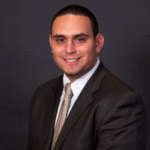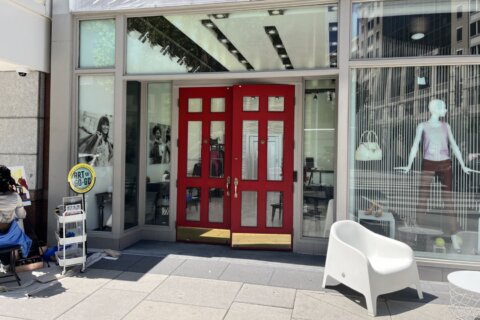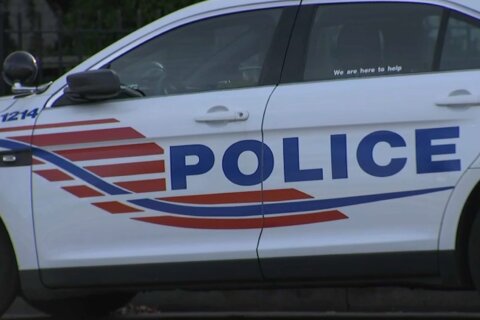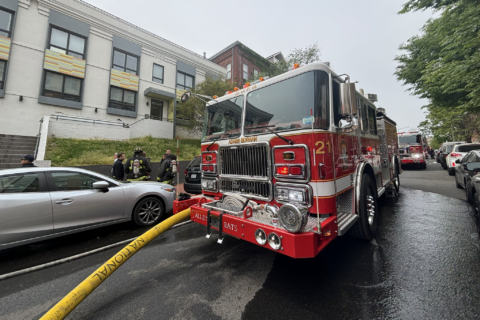Excited at the possibility of having his 4- and 6-year-old kids’ return to a classroom after months of virtual classes, parent Mark Histed, of Ward 1 in D.C., decided to have the pair attend school in-person for the 2021-22 school year.
School staff and teachers have gone above and beyond, he said, working to keep students safe and in class. The father said he was reassured by the school system’s COVID-19 testing program, one of several safety protocols in place.
And Histed said he was optimistic after the COVID-19 testing switched from an opt-in to an opt-out program, making all students eligible to be tested unless their parents requested otherwise.
But frustration set in when he learned that the program aimed to test 10% of asymptomatic students each week instead of all students, and that the system wasn’t planning to use rapid tests.
He was frustrated further when his 4-year-old had been selected for testing, and the result revealed that the saliva sample was inadequate and couldn’t be evaluated. The electronic results portal is difficult to navigate too, he said.
In recent weeks, parents, educators and D.C. Council members have detailed the challenges the school system is facing with regard to testing.
The city has yet to reach that 10% figure; young kids are having trouble producing adequate samples; and the timing of results varies. As a result, some parents are resorting to purchasing rapid tests to use at home.
Bridget Hunnicutt, a parent with a second and fourth grader enrolled at D.C. schools, described similar website issues and said she was flustered when three students in her son’s class contracted the coronavirus during the first three weeks of school.
She said the school’s testing program isn’t well- thought-out.
When the program was introduced, city leaders said a sample of students at every school would be tested for COVID-19 on a weekly basis.
Because it’s a pool testing strategy, if a positive result is discovered, more testing and notification would be done. The strategy helps to determine the prevalence of the coronavirus among a group.
D.C. is working to address some of the concerns, as Mayor Muriel Bowser unveiled plans Thursday to spend an additional $22 million to support COVID-19 mitigation efforts in schools. Specifically, the spending will allow each school to be assigned a COVID Strategy & Logistics Coordinator to facilitate logistics.
The new coordinator will be tasked with supporting contact tracing, school notifications related to the coronavirus and at-school testing operations, according to a news release.
A source familiar with the city’s testing program told WTOP that the city is working with its vendor to maintain consistent scheduling, provide the same support at every school, and increase its overall staffing.
The source said testing is conducted at 174 schools and 33 charters. Other charters that haven’t opted in to the city’s program can create a testing plan themselves.
Weeks into the school year, parents are seeking improvement.
“I’m just frustrated that we’re many weeks into school right now,” Histed said. “There are great changes at the central level. It’s great the testing is now opt out instead of opt in. But I just wish that this had all been resolved in July or August, before school started.”
The city came closest to its asymptomatic testing goal the week of Sept. 27, when it reached 8.8% and tested 6,000 asymptomatic students. It conducted some 4,500 asymptomatic tests the week of Oct. 4, when schools were closed Oct. 7 and 8.
According to the city’s $15 million contract with testing vendor Shield T3, which was obtained by WTOP, the vendor has the capacity to conduct up to 30,000 saliva-based PCR tests per week. It expected its average to be 10,000 to 15,000 each week.
While vendor capacity isn’t an apparent challenge, logistics have proven to be. At-large Council member Christina Henderson told WTOP that middle and high school students are not being told that they can’t eat or drink an hour before the testing, which is a requirement for the sample to be accurate.
She described scheduling challenges too, and said some parents are waiting three to five days for test results. The contract requires “turn-around of test results in average of no more than 8 hours for results of pooled tests.”
The testing source said if a result is reported more than 24 hours after the sample is received at a lab, the city isn’t charged for the test.
School administrators and teachers, Henderson said, are left to work through contact tracing on top of other academic responsibilities as well.
“I have a lot of empathy for folks who are working in schools right now and have been working in schools for the past 18 to 24 months,” Henderson said. “It’s been a lot.”
While some council members and parents have advocated for use of rapid or nasal-based tests, the source with knowledge of the program said the initiative only involves saliva testing.
A Bowser administration official told WTOP the new funding announced Thursday is mainly to facilitate logistics at the school level rather than purchase different types of tests.
Paul Kihn, the city’s deputy mayor for education, told council members in a call last week that the city is satisfied with the vendor, because it has been responsive to the city’s feedback.
The testing source told WTOP that Shield T3 has hired a subcontractor, HR Support, to handle collection of samples in schools and the transport of samples to a lab. Shield T3 is also adding up to three additional subcontractors to scale up staffing.
Currently, the source said, Shield T3 has four full-time field employees, which includes two program managers, a field operations manager and a data analyst and reporting manager.
When asked why the city hasn’t met its weekly testing goal, the source said D.C. is working to definitize the contract to update specific requirements based on current and future testing needs.
Henderson, with the council, said she’s unsure how to evaluate the vendor’s performance, because the saliva testing program has mainly been used on college campuses, which makes a comparison difficult.
- Sign up for WTOP alerts
- Latest coronavirus test results in DC, Maryland and Virginia
- Latest vaccination numbers in DC, Maryland and Virginia
Looking for more information? D.C., Maryland and Virginia are each releasing more data every day. Visit their official sites here: Virginia | Maryland | D.C.
In the coming weeks, the city will be pressed to ramp up its testing program. Part of the emergency legislation that the council recently passed calls for 20% of asymptomatic students to be tested by November.
Last week, At-large Council Member Elissa Silverman told WTOP testing is still the primary school-related concern she hears from parents. For parents Histed and Hunnicutt, the situation is urgent.
“One of the big concerns from school leaders and educators is, is our testing program effective enough so that students can actually stay in school?” Henderson said. ” … Can we use testing in a way that we have seen happen in say Europe, where testing is just a part of the daily culture?”








